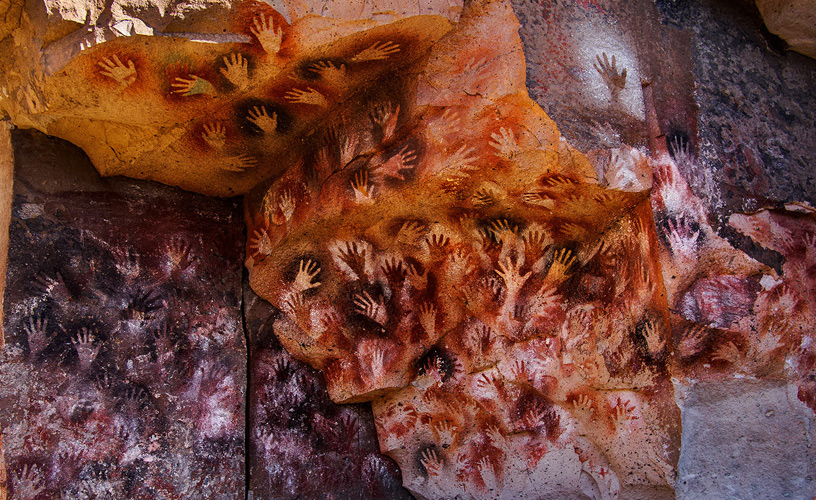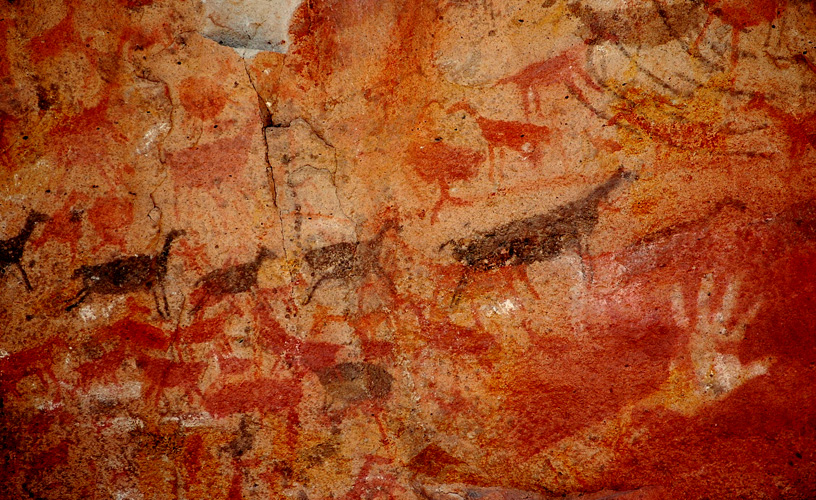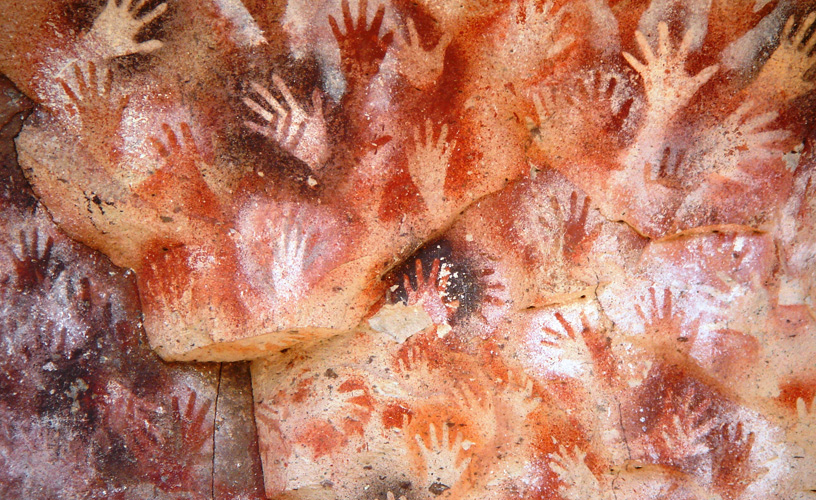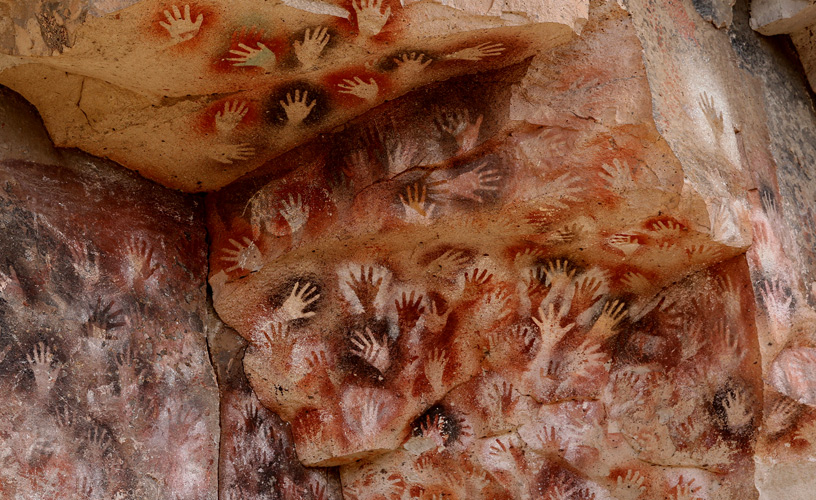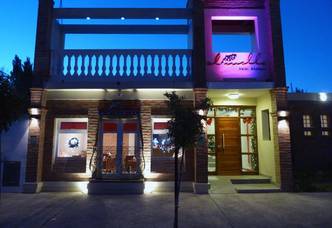The Cave of Painted Hands
The archeological value and interpretation of the meaning of this pre Tehuelche art are well worth a visit to discover the cosmopolitan vision of the first dwellers of Patagonia in those painted signs.
In order to visit the famous Cave of Hands, we set off at Colonia Sarmiento and crossed the border from the Province of Chubut into Santa Cruz in the company of a qualified guide. On the paved route, we were surprised by a herd of guanacos that was marching across the Patagonian steppe. “It is also usual to find rheas”, the guide told us. The deep ravine of the Pinturas River welcomed us into a hiking tour up to the overhang and the caves. Huge walls of rock with porous volcanic textures border the Pinturas River. This archeological corridor runs parallel to National Route 40 and is made up by the Cave of Hands, the Charcamata Overhang and the Great Cave. We went down the ravine cliffs to the site where we would find the first paintings in caves and overhangs. To reach the other archeological sites, we had to continue along the ravine trail. A certain degree of physical fitness is required in order to go on this three-hour hike carrying backpacks along the steep slopes of the Pinturas River, a stretch that lies inside the property called estancia Los Toldos. There is an inn and also a shelter at this spot. As we arrived, we looked at the Cave of Hands and it seemed to us that it was framed by a window.
Declared World Cultural Heritage Site by UNESCO, the figures have remained unaltered throughout the years amidst the natural imposing Patagonian scene. They were made by the first dwellers of the area, a pre Tehuelche civilization. Its high value resides in the precious information they reveal about the lifestyles of these groups. Nothing is left to chance in these representations. If there are guanaco hunting scenes, it is because they would devote their time to this activity in order to feed their people and take shelter from the cold temperatures. Rituals and symbols are present in images and imply a mystic union between the participants and the forces of the Earth. The hand imprints were made using different techniques. There are positive marks managed by pressing the palms previously smeared with paint. The most ancient and famous are overlapped negative images. They were made by using small hollow animal bones as aerographers. The paints were made from vegetation (roots, bark, etc.) and the hues managed were black, purplish red, yellow, white, purple and very rarely green. In addition to the animal figures, there are human silhouettes and geometric signs such as circles, stars, curved and spiral layouts, to name a few. Expert Francisco Pascasio Moreno found them and wrote a detailed report of the discovery. Afterwards, it was an object of study among specialists. In 1972, a group of archeologists used a Carbon 14 analysis to determine that they were made around 7,350 B.C. Years ago, some sets of cave paintings were only known by the locals. As tourism boomed, only visits on foot, horseback or 4WD in the company of authorized local guides were allowed in order to avoid deterioration. “You have just seen a thousand-year-old art and culture manifestation that the first dwellers of these lands have left for us. And we think we are the generators of this world.” The guide smiled at us as he bade such farewell. His words remained in our thoughts for a while.
Mónica Pons
Gentileza Cuevadelasmanos.org
Contact of the excursion or tour
Dir. de Turismo Munic. de Sarmiento
Pietrobelli 388, Sarmiento, Chubut, Agentina
Phone: +54 297-4898220
